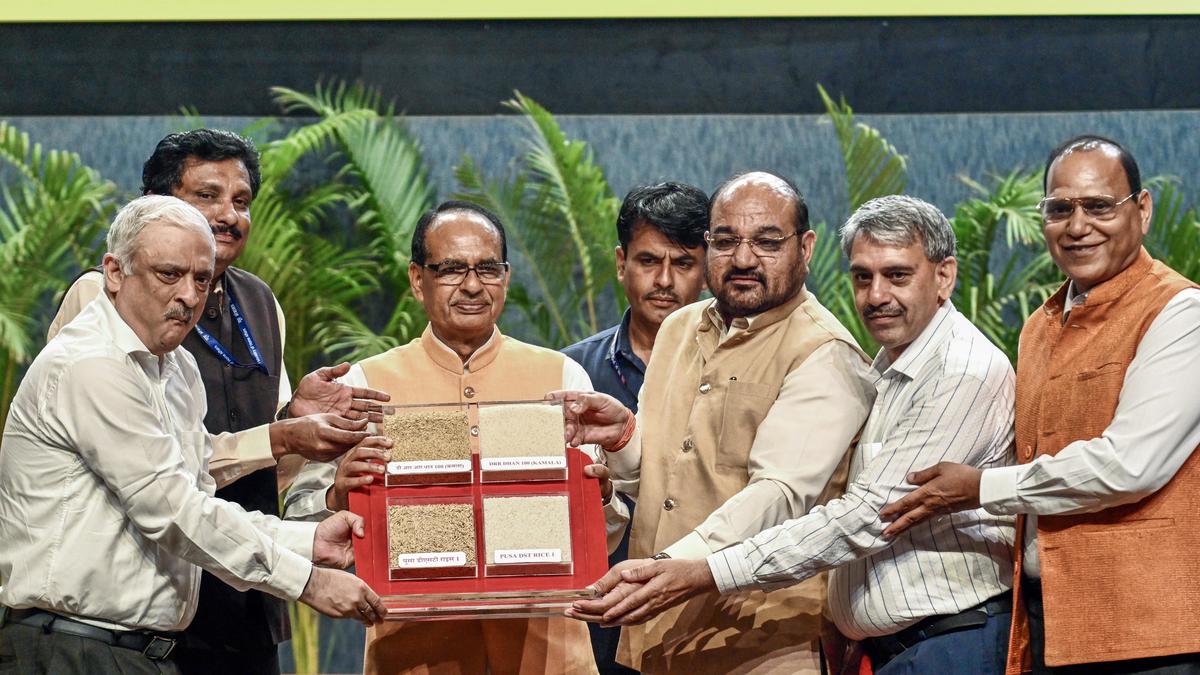India Develops Genome-Edited Rice Varieties

India Develops Genome-Edited Rice Varieties: UPSC Analysis
Analysis
- Significance of the Development
- India becomes the first country in the world to develop rice varieties using genome editing technology.
- Developed by ICAR (Indian Council of Agricultural Research) with multiple institutional collaborations.
- Seeds are expected to be available for farmers after regulatory clearances within six months, with large-scale seed production in the next three crop seasons.
- Varieties Developed
- DRR Dhan 100 (Kamala): Developed from Samba Mahsuri; high-yielding, drought-tolerant, high nitrogen-use efficiency, and 20 days earlier maturity. Yield: 5.37 t/ha vs 4.5 t/ha of parent.
- Pusa DST Rice 1: Developed from MTU 1010 (Maruteru 1010); higher yield under inland salinity (+9.66%), alkalinity (+14.66%), and coastal salinity stress (+30.4%). Yield: 3,508 kg/ha vs 3,199 kg/ha of parent.
- Technology Used
- Genome editing techniques: SDN-1 and SDN-2 (Site-Directed Nuclease 1 and 2).
- No foreign gene introduced (unlike SDN-3, which constitutes GM crops).
- Mutation occurs through precise, targeted editing of native genes.
- International scientific community approval received; Kamala research paper under publication, Pusa DST Rice 1 peer-reviewed and cited over 300 times.
- Regulatory and GM Considerations
- Not classified as genetically modified (GM) crops.
- SDN-1: Cell repairs DNA cut naturally.
- SDN-2: Scientists guide the cell for repair.
- SDN-3: Involves introduction of foreign genes → considered GM.
- Controversies / Criticism
- Concerns raised about premature announcement and lack of transparent field data.
- Objections from farmers’ representatives and activist groups about seed sovereignty and IPR issues.
- Calls for accountability and rigorous field testing before large-scale adoption.
- Static / UPSC-Relevant Points
- Developed under All India Coordinated Research Project on Rice (2023–2024).
- Climate-resilient, nutritionally rich, and high-yield varieties targeted to address food security and climate change challenges.
- Genome editing in crops has been applied internationally since 2001 (tomato, fish, soybean), but rice is a first in India.
- Techniques SDN-1 and SDN-2 exempted in several countries from GM regulations.
Updated - 15 May 2025; 08:30 AM | The Hindu